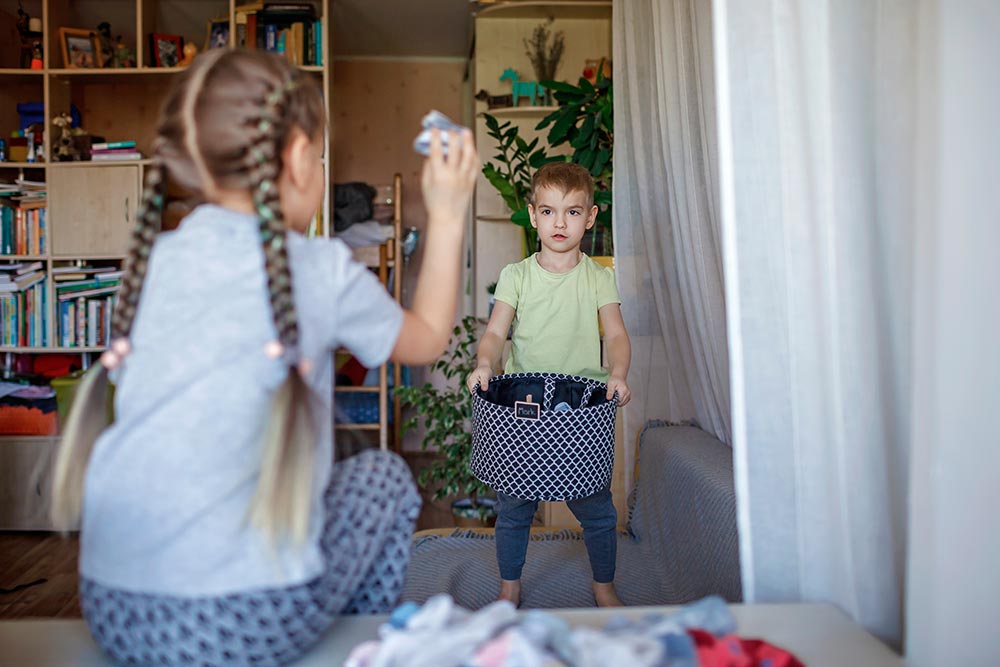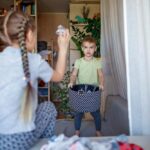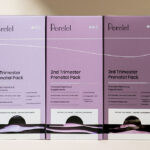How to Teach Your Kid to Clean Their Room (Without the Drama)

It isn’t just about the mess—it’s about building life skills, confidence, and independence (with less pushback than you think).
Getting your kid to clean their room can feel like asking a cat to do taxes. It’s one of those parenting tasks that sounds simple but rarely is. Still, teaching your child how to care for their own space is about way more than just keeping things tidy.
Helping little kids learn to clean up for the first time teaches them responsibility, builds confidence, and gives them a sense of ownership over their little corner of the world.
It may take time (and patience), but with the right approach, even the messiest kid can learn how to manage their space—and maybe even take pride in it. Because a clean room isn’t just nice to look at, it’s a skill that sets the stage for independence later on.
Start with Age-Appropriate Expectations
Children of different ages understand the command “clean your room” in varying ways. The moment when a toddler successfully gathers stuffed animals represents progress. A five-year-old putting laundry in the hamper? Progress.
Establishing proper age-specific standards makes the cleaning task manageable while significantly reducing stress levels for everyone involved.
For toddlers and preschoolers, keep it simple: Preschoolers should learn to wipe up small spills, match socks from the laundry, and return items to bookshelves while also disposing of trash properly.
It’s not about perfection—it’s about starting small.
As kids get older, you can layer on more responsibility: teens can handle tasks like bed making, laundry sorting, or surface cleaning. It’s a good time to teach them to take pride in keeping up their own room as well.
Tip: A chore chart with stickers is an excellent way for older children to learn these good habits. It gives them a visual of incentives they can earn.
Celebrate effort, not results. When kids feel good about helping—even if their idea of “clean” is a little sideways—they’re more likely to stick with it.
Keep the bar realistic and remember: this is a learning process, not a Pinterest photoshoot.
Create a Clear, Visual Cleaning Routine
Most kids don’t respond well to vague instructions like “go clean your room.” (Honestly, same.) That’s why creating a step-by-step routine—with visuals, if they’re young—can make a huge difference.
Try a simple picture chart for preschoolers showing exactly what to do: put blocks in the bin, books on the shelf, blanket on the bed. For older kids, a checklist works wonders. When kids can see what needs to be done and mark off each task, it gives them a sense of ownership—and progress.
By breaking the job into bite-sized pieces, you’re making the idea of a clean room for kids feel way more manageable. And the more often they follow the same steps, the more second nature it becomes. (Repetition really is the secret sauce to habit-building.)
Visuals keep it clear.
Routines keep it consistent.
And together? They take the drama out of cleaning.
Make Cleaning Their Room Fun
Let’s be honest, telling kids to clean their room doesn’t exactly spark joy. But teaching kids to clean doesn’t have to feel like pulling teeth. A little creativity goes a long way.
Try turning cleanup time into a game. Set a timer and challenge them to beat the clock, or play their favorite songs and have a dance-clean session. You can even turn it into a pretend mission: “Rescue the toys before the lava (aka laundry pile) takes over!”
Kids are way more likely to clean their room when they have some say in the process. Let them decide where their stuffed animals “live” or which basket should hold their books. Giving them control over their space builds pride—and makes them more likely to keep it neat.
And don’t underestimate the power of a reward. It doesn’t have to be anything big—maybe a cozy “after-clean chill zone” with a blanket and snack or an extra story before bed.
Making it fun transforms it from a duty into an enjoyable activity. This approach establishes a permanent foundation of assuredness for cleaning rooms.
Set Up a Room That’s Easy to Clean
One of the best ways to help kids clean their room without a fight? Set them up for success with a space that’s built to be kid-friendly and easy to manage.
Start with simple, reachable storage. Low bins, labeled shelves, and easy-access laundry baskets give everything a home—and make it much easier for kids to put things back where they belong. If they can’t reach it or figure out where it goes, it’s not going to get put away.
Less is also more. When a room is packed with toys, clothes, and “treasures,” the idea of cleaning feels overwhelming. Teaching kids to clean starts with reducing the clutter so they can actually see progress when they tidy up.
And bonus: Organization becomes instinctual when you integrate it into your room design.
Consider installing hooks for backpacks alongside bins that complement the room’s color scheme, and create space for their bedtime storybooks. Intuitive organization systems increase the likelihood of consistent usage.
A clean room for kids shouldn’t feel like an impossible task—it should feel like part of their daily rhythm.
Use Natural Consequences and Gentle Accountability
The goal isn’t to nag—it’s to teach. And one of the most effective ways to teach kids to clean their room is by tying the task to real-life outcomes they can understand.
Instead of harsh punishments or endless reminders, keep things simple and consistent. A clean room means screen time, playdates, or whatever their current favorite thing is.
No clean room? Then those extras wait. Not out of anger, but because they come after responsibilities are handled.
Kids learn fast when cause and effect are clear and predictable. “When your toys are picked up, you can play video games.” “Once your clothes are off the floor, we’ll grab a snack.” The follow-through matters more than the threat.
This kind of accountability helps build trust, not tension. It also shifts the focus from you keeping tabs to them owning the outcome. And that’s the real win—raising kids who eventually clean their room because they know how, not because someone’s standing over them.
Model the Behavior and Clean Together
Let’s be real: telling your child to clean their room while your space has dirty laundry everywhere and looks like a tornado hit is not convincing. One of the best ways to teach kids to clean is by showing them what that actually looks like.
Tidy your room or a shared space while they work on theirs. It sends a powerful message: “We all take care of our personal spaces.” And occasionally, clean the kids bedroom with them. Not as a crutch, but as a connection point. You’re not just managing a mess—you’re building habits together.
As you go, talk it out. “First, I fold the blanket. Then I stack the books. Now I’m putting the socks in the basket.” Narrating your process helps younger kids understand the steps and builds their confidence to do it on their own next time.
When kids clean their messy room alongside you, it stops feeling like a punishment and starts feeling like a shared rhythm of family life.
Teach and Practice—Then Let Go
At first you’ll need to be actively involved when teaching kids to create their own clean space because you will have to guide them through each step. That’s normal.
Eventually, you should be able to hand over the cleaning products and transfer the responsibility to them. Begin by executing the routine together for several practice runs. Guide them through each step before allowing them the opportunity to practice on their own.
Then gradually step back. Allow them to learn through their own efforts by not redoing tasks or micromanaging their work. Letting go isn’t about perfection. It’s about ownership.
Remind them: If children understand that decluttering their room is their duty and they trust themselves to accomplish it, they will step up to the task despite needing several reminders and additional patience.
Consistency is Key
While some days the cleaning process will run without issues, others will present challenges.
And that’s all part of it. What matters most is creating fun ways to get them involved, and sticking with it. Simply checking in briefly with them or giving a high-five for their effort, along with a gentle reminder to continue working will prove essential.
Kids who consistently clean their space despite imperfect results learn responsibility through hands-on experience.
Ultimately this process focuses more on teaching valuable life skills than the simple act of cleanup. By teaching life skills through room cleaning activities, kids will develop abilities that will extend well past any toys or books they organize. And that? That’s the real win.








